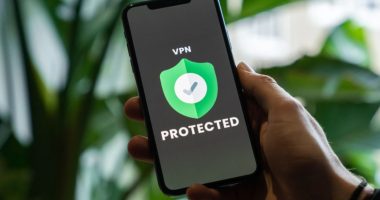

The Covid-19 pandemic is impacting communities around the world. For the two million of those people who also use the encrypted communication service WhatsApp, now more than ever is a time for calling, messaging, and seeking trustworthy information. So the World Health Organization is going where the people are, launching a new tool called WHO Health Alert on WhatsApp today.
When you text “hi” to +41 79 893 1892 over WhatsApp, you’ll receive back a text from the WHO that includes a variety of menu items for the latest information, like novel coronavirus infection rates around the world, travel advisories, and misinformation that should be debunked. Think of it like a hotline: Text 1 for the latest statistics, 4 for mythbusters, that type of thing. The WHO can also send out proactive alerts as needed to everyone who’s signed up.
The WHO isn’t the first to enlist WhatsApp in this manner. The Facebook-owned app’s ubiquity and experience handling disinformation has made an obvious choice for governments and international organizations, placing it squarely at the center of the novel coronavirus response—with all the responsibility and controversy that entails.
“We already have over one million people signed up even though we haven’t even announced it yet,” says Will Cathcart, who runs WhatsApp, of WHO Health Alert. “It’s great. There seems to be a lot of appetite from people for ways to get good, accurate information and we’re happy to do what we can there to help.”
Helplines are preferable in many ways to landing pages, social media profiles, or massive open channels, because they allow governments to use WhatsApp like regular users, having one-to-one interactions with constituents. The only difference is that the responses are automated.
Organizations can find out their options for setting up similar chatbot mechanisms at this landing page for WhatsApp’s Coronavirus resources. The bots run through WhatsApp’s business application programming interface, which maintains WhatsApp’s encryption and allows entities to manage their services
All the new institutional uses combined with widespread social isolation means that more people than ever are using WhatsApp for messaging—and an especially large volume of phone calls and video chats. To keep up with demand, Cathcart says that WhatsApp has nearly doubled its server capacity in the last few weeks.
“We don’t know what’s coming, and we view WhatsApp as a lifeline for people to communicate when they need it. And the core thing we offer is that it’ll be there and work,” he says. “We’re hearing all these amazing anecdotes especially out of places on the front lines of things like health care workers using WhatsApp to communicate with patients, to communicate with each other. Schools using it to try to do remote education, people using it to keep in touch with their friends and family, either through messaging, but actually exceptionally through video calling and voice calling. And we’re seeing that in the data with a ton of extra usage.”
On a platform that has struggled for years to curb misinformation, all of that extra usage has also bred pandemic-related rumors and myths. WhatsApp’s end-to-end encryption means that only the devices at either end of a communication hold data unencrypted. WhatsApp itself is totally boxed out of being able to access user communications other than metadata like which accounts are interacting. This means the company can’t moderate content on the service like social networks can. Users can communicate on WhatsApp without being surveilled by oppressive governments, but those same protections can also make it easier for misinformation to spread. Meanwhile, law enforcement in the US and around the world have increasingly lobbied to undermine end-to-end encryption.
Cathcart says WhatsApp’s priority, even more so during the pandemic, is to elevate accurate information and support fact-checking organizations around the world. The company announced a $1 million donation on Wednesday to the Poynter Institute’s International Fact-Checking Network. The goal is to help buoy the #CoronaVirusFacts Alliance, which is bringing together 100 local organizations in more than 45 countries to fight Covid-19-related disinformation.








